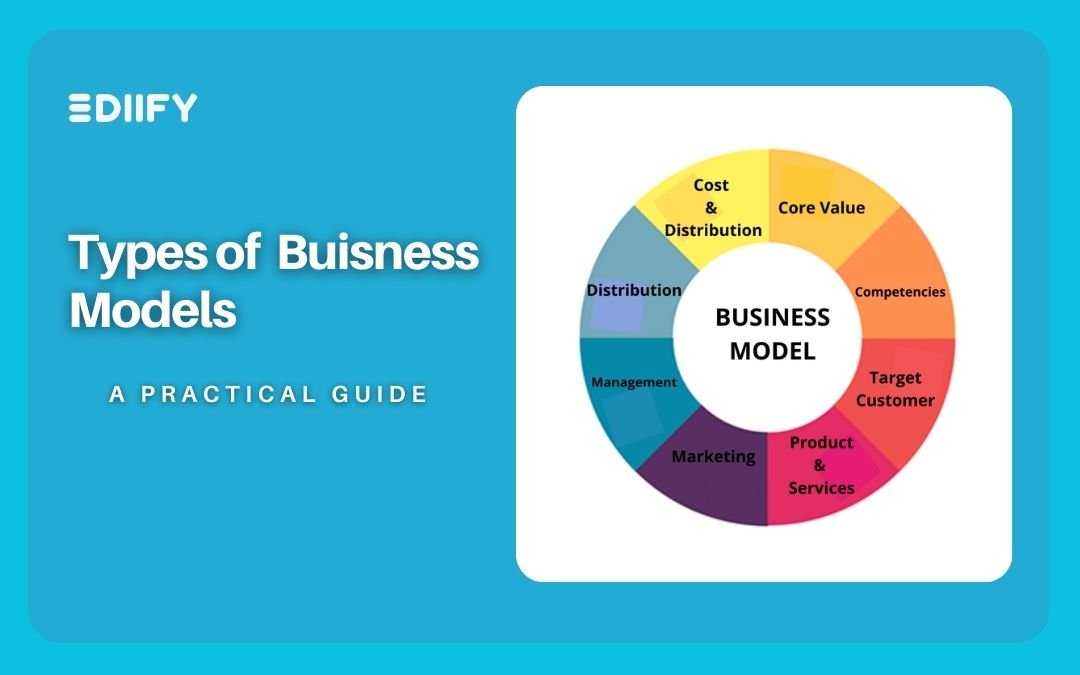Introduction:
In the fast-paced realm of entrepreneurship, types of buisness model success often pivot on the strength of its underlying business model. This strategic framework acts as a guiding force, leading companies through the complex landscape of market challenges and opportunities. From time-tested traditional models to cutting-edge, technology-infused approaches, the spectrum of business models is expansive and constantly evolving. This blog will thoroughly explore various business models, dissecting their characteristics, advantages, and potential challenges.
The Traditional Models:
1. Brick-and-Mortar Retail:
- Description: The quintessential physical storefront where customers visit for in-person purchases.
- Advantages: Tangible customer interaction, immediate sales, and personalized service.
- Challenges: Limited geographical reach, higher operating costs, and vulnerability to market fluctuations.
2. Franchise Model:
- Description: Entrepreneurs sell the rights to operate a business under an established brand.
- Advantages: Expedited expansion, shared business risks, and capitalization on brand recognition.
- Challenges: Limited control over individual franchises, potential dilution of brand identity.

3. Direct-to-Consumer (DTC):
- Description: Brands directly sell products to consumers, bypassing intermediaries.
- Advantages: Enhanced control over branding, customer data, and profit margins.
- Challenges: Fierce competition, logistical intricacies, and the imperative for effective digital marketing.
Types of Business Models
https://www.investopedia.com/terms/b/businessmodel.asp
4. Subscription-Based Model:
- Description: Customers pay recurring fees for continued access to a product or service.
- Advantages: Predictable revenue streams, fostering customer loyalty, and potential for long-term relationships.
- Challenges: Sustaining continuous value delivery, ensuring customer retention, and navigating market saturation

5. Freemium Model:
- Description: Basic services are free, with premium features available for a fee.
- Advantages: Widespread user adoption, flexibility, and the ability to monetize a user base.
- Challenges: Striking a balance between free and premium features, persuading users to upgrade.
Take a look at the business model of Myntra
https://ediify.com/the-myntra-business-model-what-you-need-to-know/
6. Platform as a Service (Paas):
- Description: Companies provide a platform enabling customers to develop, run, and manage applications.
- Advantages: Scalability, reduced development time, and cost-effectiveness.
- Challenges: Dependence on the platform provider, addressing security concerns, and adapting to evolving technology standards.
Conclusion:
In the ever-shifting business landscape, selecting the appropriate model is a pivotal decision with far-reaching consequences for a company’s trajectory. Whether relying on the reliability of traditional models, harnessing the scalability of e-commerce, or embracing the innovation of tech-driven approaches, each business model presents a unique array of opportunities and challenges. Successful entrepreneurs recognize the importance of adapting to market trends, understanding customer needs, and leveraging technological advancements. As we navigate the intricate world of business models, one truth remains evident – the ability to evolve and embrace change is the cornerstone of long-term success in the fiercely competitive business arena.




